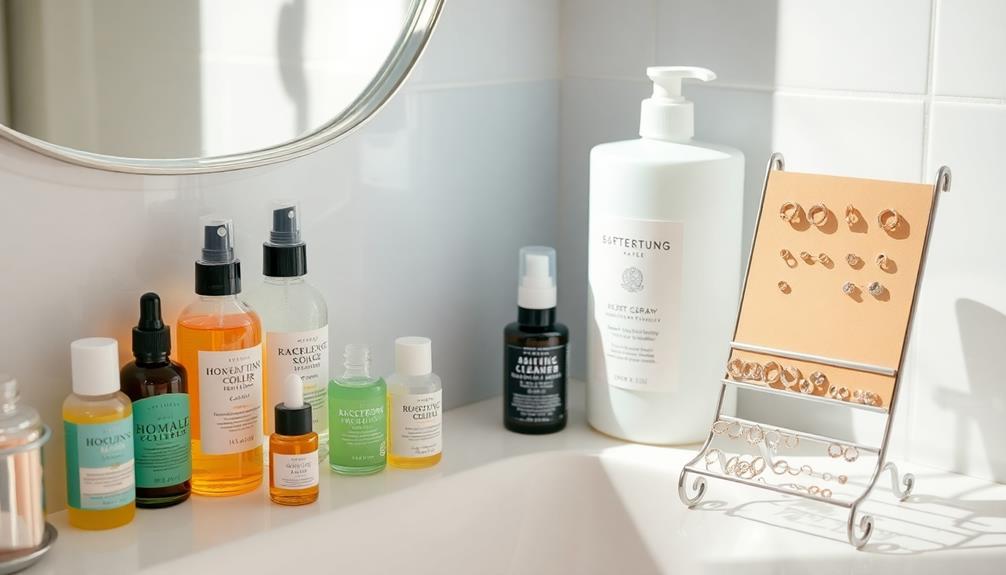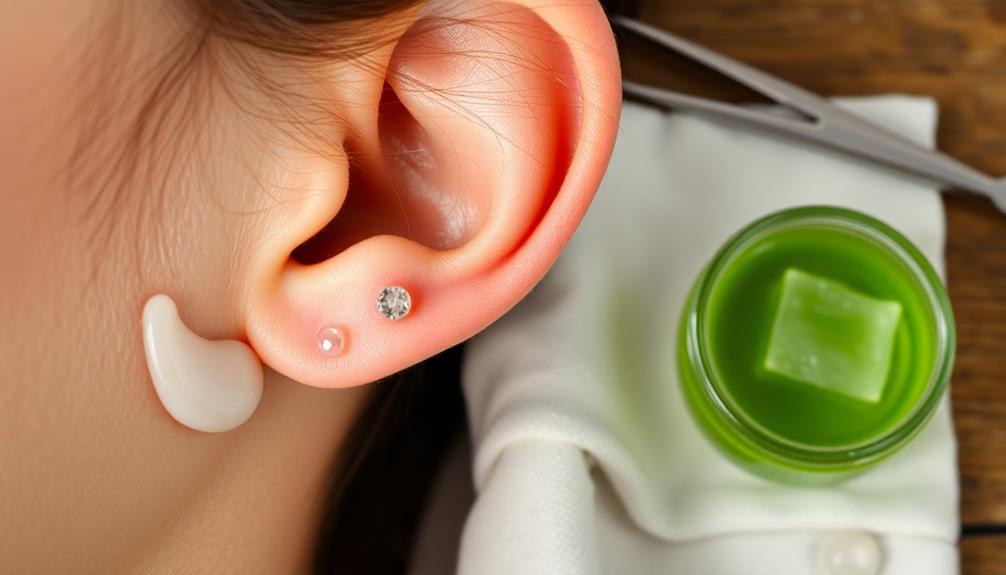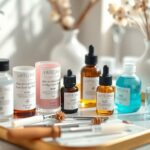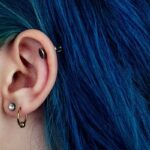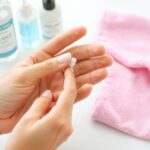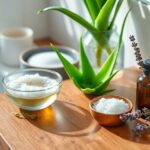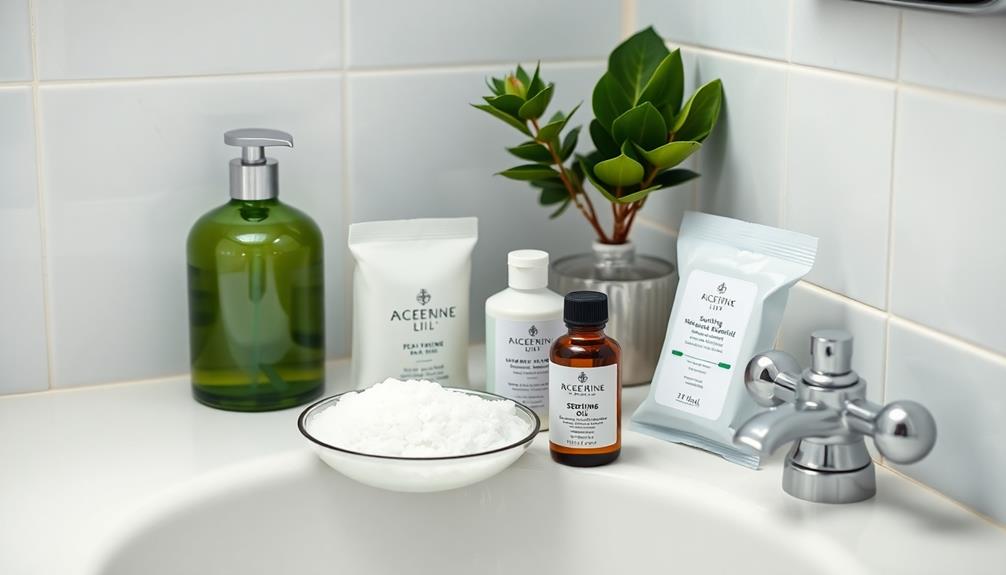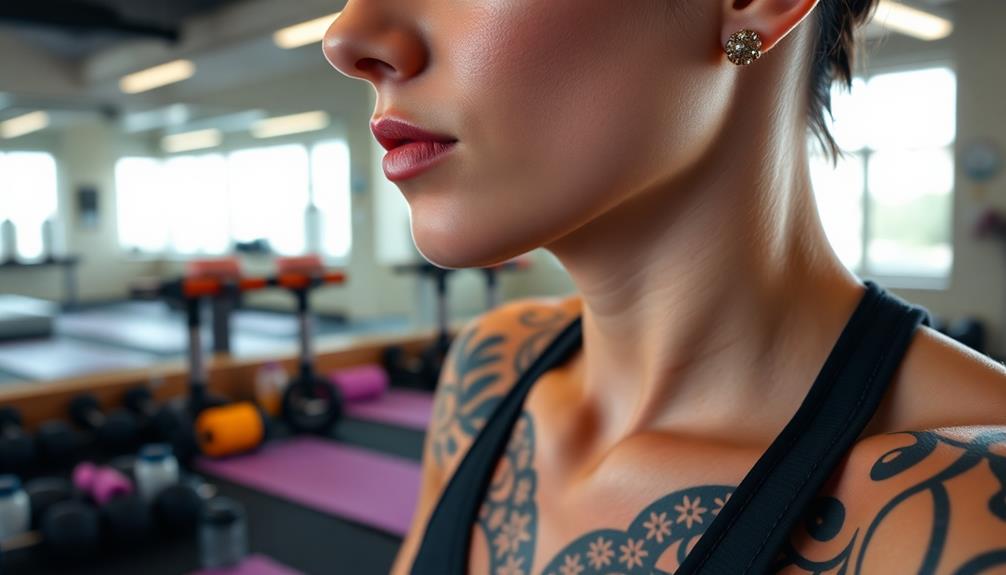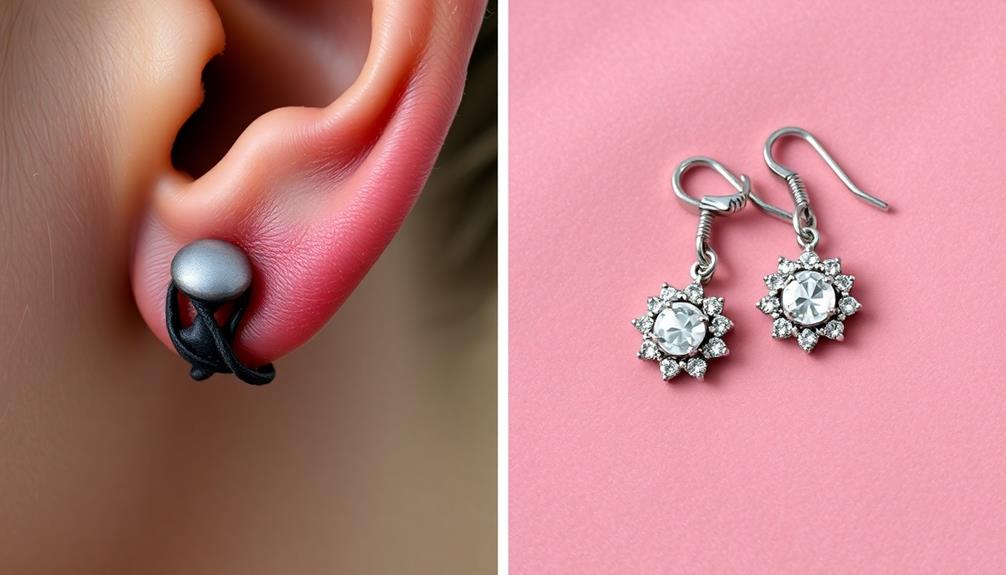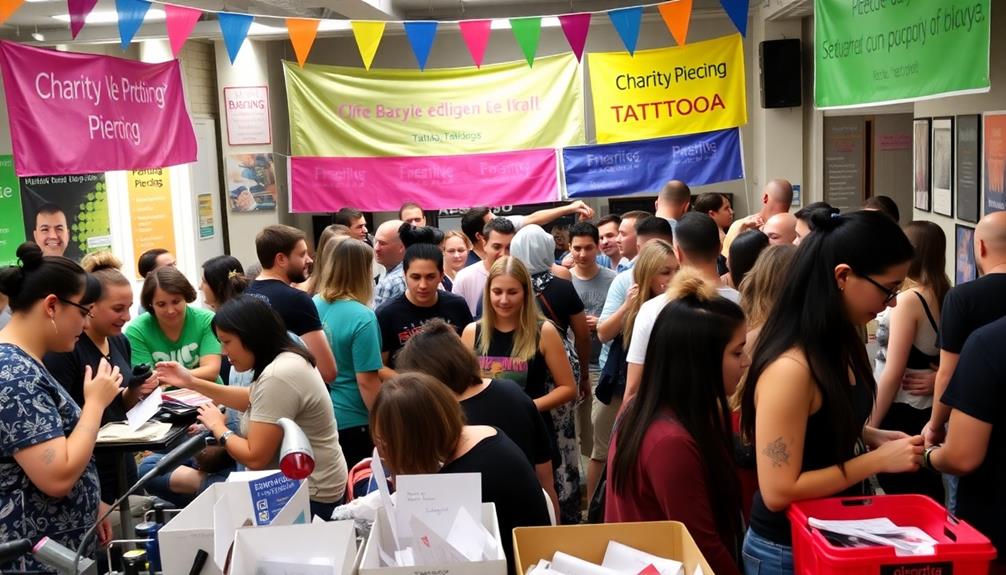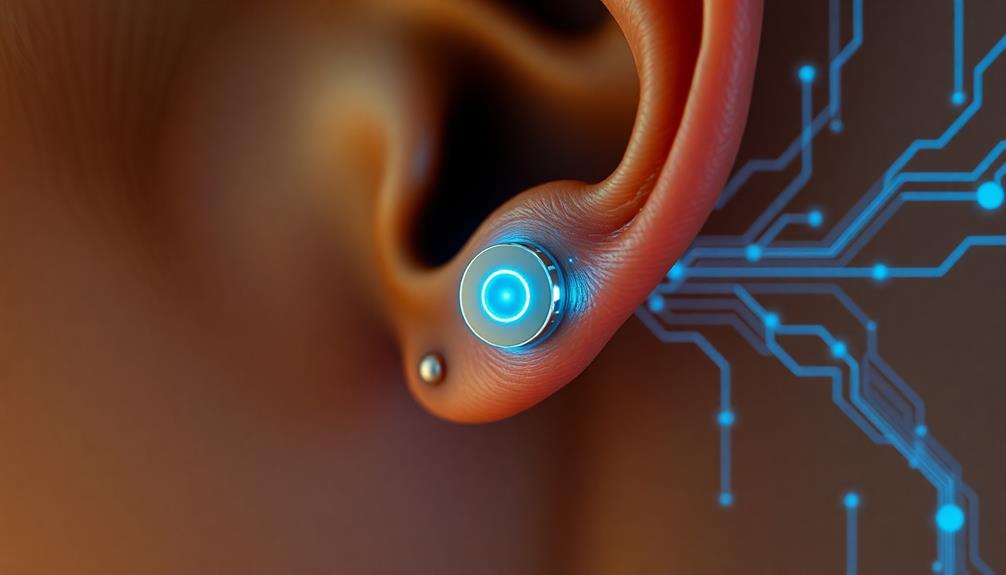Creating a personalized aftercare routine for multiple piercings is essential to avoid complications. Start by using saline solutions to clean your piercings at least once or twice daily, and choose gentle products like Neilmed Piercing Aftercare spray. Make sure to keep hair products and cosmetics away from the piercing sites. Avoid sleeping on the side of new piercings and use supportive pillows. Pay attention to signs of infection, like increased swelling or unusual discharge. Each piercing type has specific care needs, so tailoring your approach can enhance healing. There's plenty more valuable information you might find beneficial.
Key Takeaways
- Assess each piercing type and establish specific cleaning routines based on their unique healing times and aftercare products needed.
- Utilize saline solutions for all piercings, ensuring you clean them according to the recommended frequency for each type.
- Avoid using harsh soaps or alcohol-based products; stick to gentle aftercare sprays designed for piercings.
- Keep track of symptoms; monitor for any signs of infection or unusual healing patterns specific to each piercing.
- Maintain a consistent hand-washing routine before touching your piercings to minimize the risk of introducing bacteria.
Importance of Aftercare
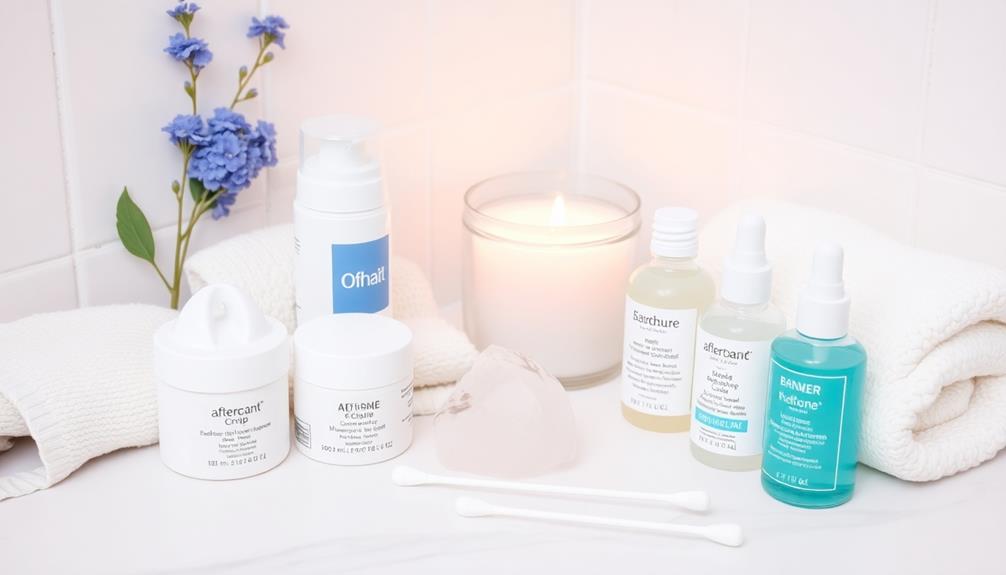
When you get a piercing, aftercare isn't just a suggestion—it's essential for ensuring a smooth healing process. Proper aftercare plays an important role in preventing complications and infections that could derail your recovery. This is especially necessary for oral piercings, which are more susceptible to bacteria and irritation. Using suitable products, like diluted essential oils for soothing skin, can aid in the healing process essential oils safety.
Establishing a consistent cleaning routine helps keep your piercing free from harmful germs. Regularly using appropriate aftercare products can greatly enhance your healing process.
You'll want to avoid sleeping on the side of your new piercing; this minimizes trauma and irritation, which can slow down recovery.
It's also important to be mindful of your overall health during this time. If you experience any unusual symptoms or have concerns, don't hesitate to contact your piercer. They can provide tailored advice based on your specific type of piercing and help you navigate any challenges.
Recommended Aftercare Products
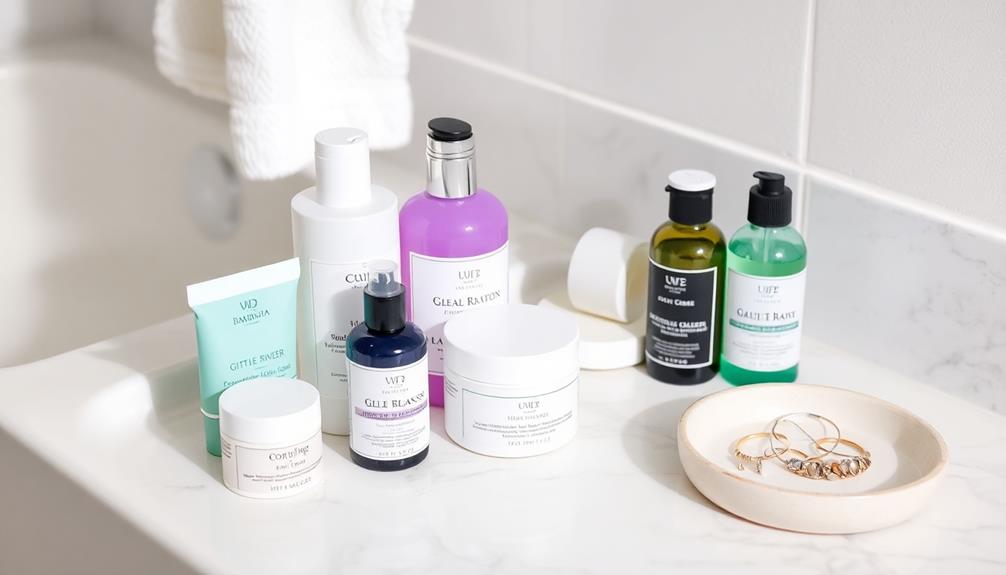
After ensuring a solid aftercare routine, choosing the right products can make all the difference in your healing journey. When it comes to cleaning your piercings, a saline solution is your best friend. You can either prepare it at home or opt for pre-made options like Neilmed Piercing Aftercare, which comes in a handy 75ml spray. Custom Plugs also offers a specialized aftercare spray designed specifically for healing piercings.
For those stretching their ears, consider using jojoba oil to maintain skin elasticity and hydration. Priced at approximately £3.89, it's a worthwhile investment. Remember, proper care is essential—avoid harsh soaps and alcohol-based products, as they can irritate your piercings and slow the healing process. Here's a quick reference table for your aftercare products:
| Product Type | Recommendation | Purpose |
|---|---|---|
| Saline Solution | Neilmed Piercing Aftercare | Cleaning |
| Aftercare Spray | Custom Plugs Aftercare Spray | Healing |
| Jojoba Oil | Jojoba Oil | Hydration & Elasticity |
| Harsh Soaps | Avoid | Prevent Irritation |
Consistent use of these quality aftercare products will considerably reduce the risk of complications.
Effective Cleaning Techniques
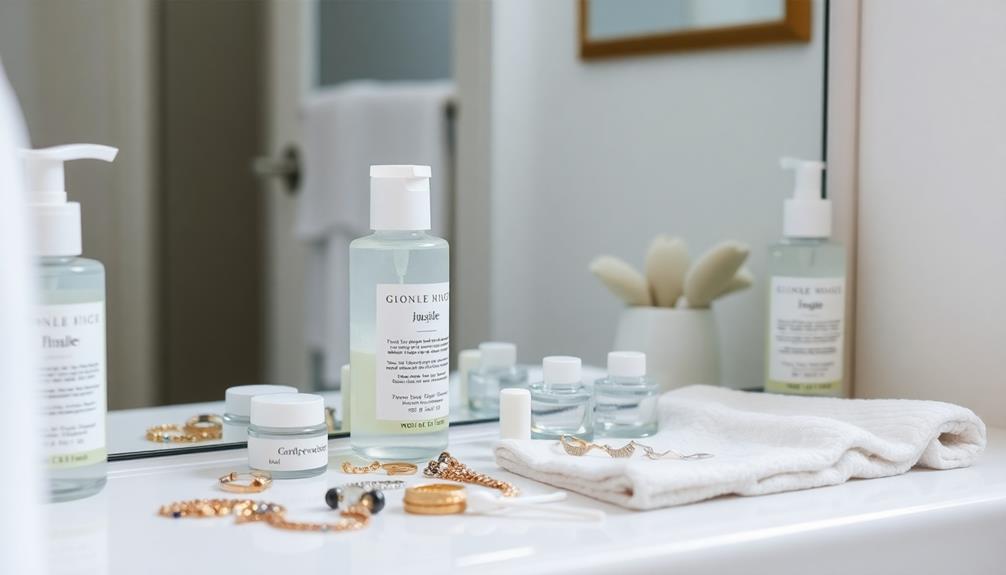
When it comes to cleaning your piercings, proper hand washing is vital to avoid introducing bacteria.
It's important to verify that your jewelry is made from safe materials like titanium or surgical steel to minimize irritation during the healing process.
You should clean your piercings with a sterile saline solution, using a cotton ball to remove any crust or debris.
Afterward, make certain to gently pat the area dry with a clean paper towel to keep it free from germs.
Hand Washing Importance
Effective hand washing is fundamental for maintaining the health of your piercings. Before you touch or clean your piercings, always wash your hands thoroughly with non-fragrance antibacterial liquid soap for at least 20 seconds. Use warm water and scrub all surfaces of your hands, including between your fingers and under your nails. This extensive clean helps prevent introducing bacteria to your newly pierced skin.
After washing, dry your hands using a clean paper towel or air dryer. Avoid cloth towels, as they can harbor bacteria and may dislodge your jewelry. It's essential to clean your hands before performing any aftercare routines, like applying saline solution or cleaning your piercing. This step guarantees you maintain proper hygiene.
Regular hand washing is critical, especially after handling anything that could carry bacteria, to promote safe healing and reduce the risk of infection.
Saline Cleaning Method
Cleaning your piercings regularly with a saline solution is essential for promoting healing and preventing infection. To prepare an effective saline solution, mix 1/4 teaspoon of non-iodised sea salt with 8 ounces of warm distilled water. This gentle mix helps clean your piercings by removing crust and debris.
Follow these steps for effective initial care:
- Wash your hands thoroughly before touching your piercings to avoid introducing bacteria.
- Soak the piercing in the saline solution for 15-20 seconds, 1-3 times daily, to loosen any discharge.
- Pat dry the area with a clean paper towel, steering clear of cloth towels that can harbor bacteria.
- Monitor your piercings regularly for signs of infection, such as excessive swelling or unusual discharge.
Drying Techniques After Cleaning
After you've cleaned your piercings, it's important to dry them properly to prevent bacterial growth. Using the right drying techniques can make a significant difference in your healing process. Here are some effective methods to take into account:
| Drying Technique | Description | Pros |
|---|---|---|
| Clean Paper Towel | Gently pat the area with a clean paper towel. | Reduces bacteria risk. |
| Non-Woven Gauze | Use disposable gauze to pat dry. | Minimizes fiber stickiness. |
| Air Dry | Let the piercing air dry after initial drying. | Guarantees complete moisture removal. |
| Avoid Rubbing | Never rub the area while drying. | Prevents irritation and damage. |
Precautions During Healing
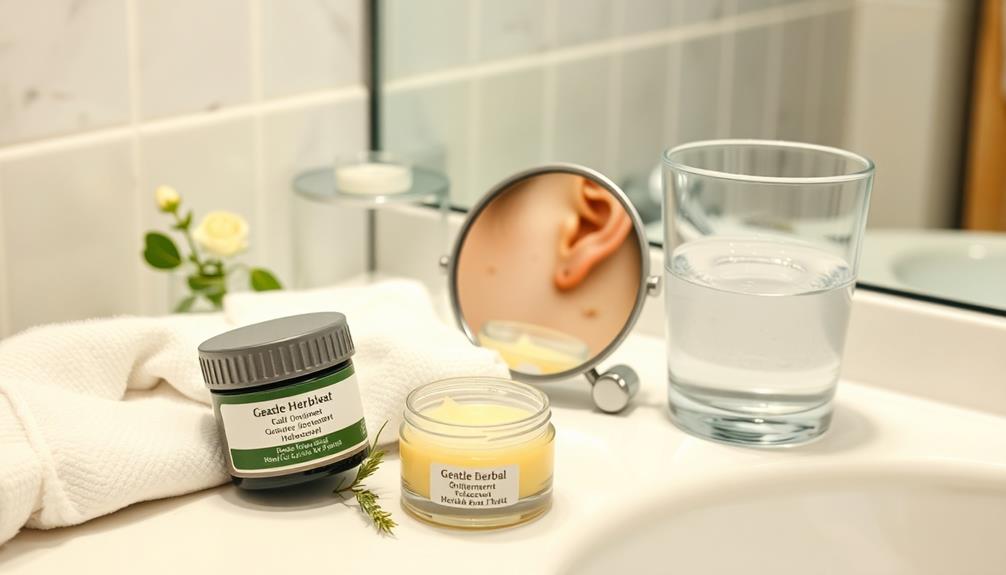
During the healing process, taking precautions is essential for guaranteeing your piercing heals properly and without complications.
During the initial healing period, you'll want to keep your piercing clean and avoid any actions that could introduce bacteria. Here are some key precautions to follow:
- Avoid rotating or twisting your jewelry, as this can create irritation and increase the risk of infection.
- Keep hair products, cosmetics, and other irritants away from the piercing site to minimize local swelling and inflammation.
- Refrain from swimming in pools, hot tubs, or natural waters until your piercing has fully healed, since these environments can harbor harmful bacteria.
- When sleeping, use supportive pillows to avoid putting pressure on the piercing and consider sleeping on the side opposite to your new piercing.
Additionally, avoid using harsh soaps on the area. Instead, use a gentle saline spray to help keep the piercing clean.
Signs of Infection
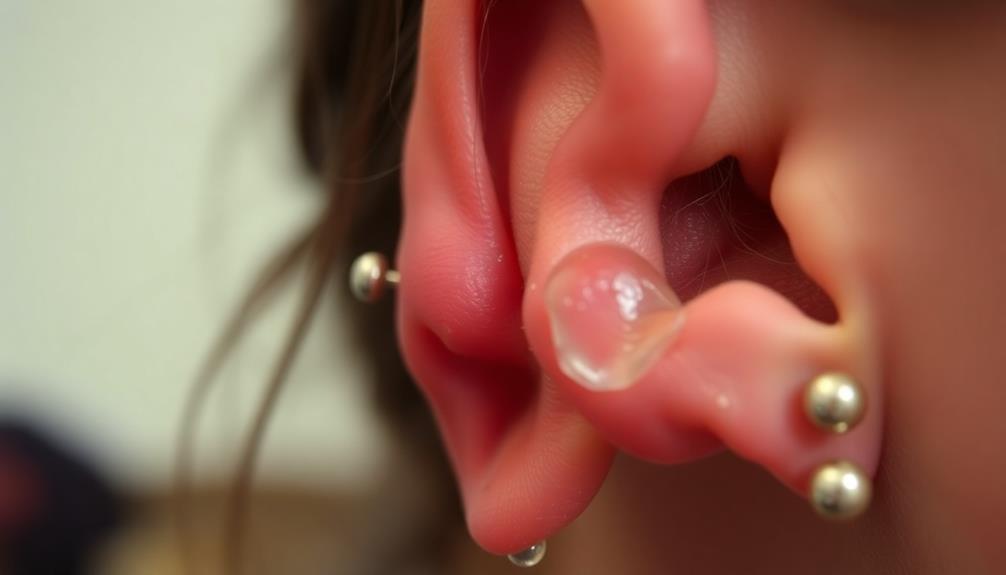
Recognizing the signs of infection early on can make a significant difference in your healing process. You should keep an eye out for excessive swelling, especially if it's accompanied by warmth and redness around your piercing.
If you notice localized swelling or persistent tenderness that seems to worsen rather than improve, it's essential to take these symptoms seriously.
Another key sign of infection is the presence of pus-like discharge from the piercing site, which often indicates that your body is trying to fight off an infection. Additionally, if you experience delayed healing beyond the typical timeframe for your specific piercing, it may signal an underlying issue that requires attention.
Don't ignore any unusual symptoms, such as heat around the piercing or swollen lymph nodes, as they can also indicate a problem.
If you observe any of these signs of infection, seek prompt medical attention to prevent complications. Remember, monitoring your healing process is critical, and consulting a professional piercer when concerns arise can help guarantee a smooth recovery.
Healing Times for Piercings
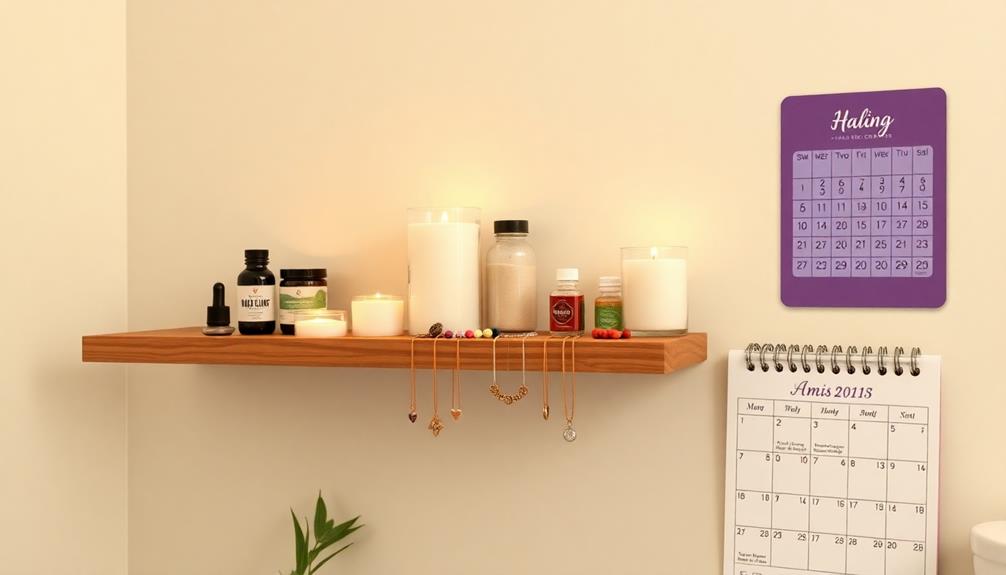
Healing times for piercings can vary widely depending on where they're located, with some taking only weeks while others might require months.
You'll notice signs of healing, like reduced swelling and tenderness, as your body recovers.
Healing Duration Variations
When it comes to the healing duration of piercings, you'll find significant variations depending on the type.
Understanding the healing time frame for each piercing can help you set realistic expectations for your initial care routine. Here are some common healing durations you might encounter:
- Tongue piercings: 4 to 6 weeks
- Nipple piercings: 3 to 6 months
- Ear lobe piercings: 4 to 6 months
- Navel piercings: 6 months to 1 year
Factors like age, overall health, and lifestyle habits can all influence how quickly you heal.
As you navigate your body piercing journey, it's important to take care of each piercing properly. During the healing process, expect to see signs of healing progress, such as reduced swelling and discharge.
Signs of Healing
Typically, you'll notice several signs that indicate your piercing is healing properly. One of the first signs of healing is a decrease in discharge. While a small amount of whitish-yellow fluid is normal in the early stages, you should see this lessen over time.
As healing progresses, swelling around the piercing site should also reduce noticeably.
Another key indicator is the absence of pain or tenderness. Initially, your piercing may feel tender, but this discomfort should gradually fade as your body heals.
Keep in mind that healing times vary by piercing type; for instance, tongue piercings usually heal in 4 to 6 weeks, while navel piercings can take 6 months to a year.
Monitoring these signs of healing is essential, as they reflect your body's response to the piercing and your care level. If you notice prolonged tenderness or any unusual symptoms, it's wise to consult a professional piercer.
Factors Affecting Healing
Several factors can influence how long it takes for your piercing to fully heal. Healing times vary greatly depending on the location of the piercing. For example, a tongue piercing typically heals within 4 to 6 weeks, while a navel piercing can take 6 months to 1 year. Understanding these differences is essential for managing your expectations.
Here are some key factors influencing healing:
- Initial Care: Proper aftercare, including regular cleaning, is important.
- Age and Health: Younger and healthier individuals often heal faster.
- Lifestyle Habits: Smoking or poor nutrition can slow the healing process.
- Medical Conditions: Certain conditions may hinder recovery, requiring more attention.
During the healing phase, you might notice some discoloration and whitish-yellow fluid. These can be normal, but monitor them closely to confirm they don't signal infection.
Using water and a gentle wound wash can help maintain cleanliness and promote healing. By paying attention to these factors, you can better support your body as your piercing heals, guaranteeing a smoother recovery process.
Tailoring Your Routine
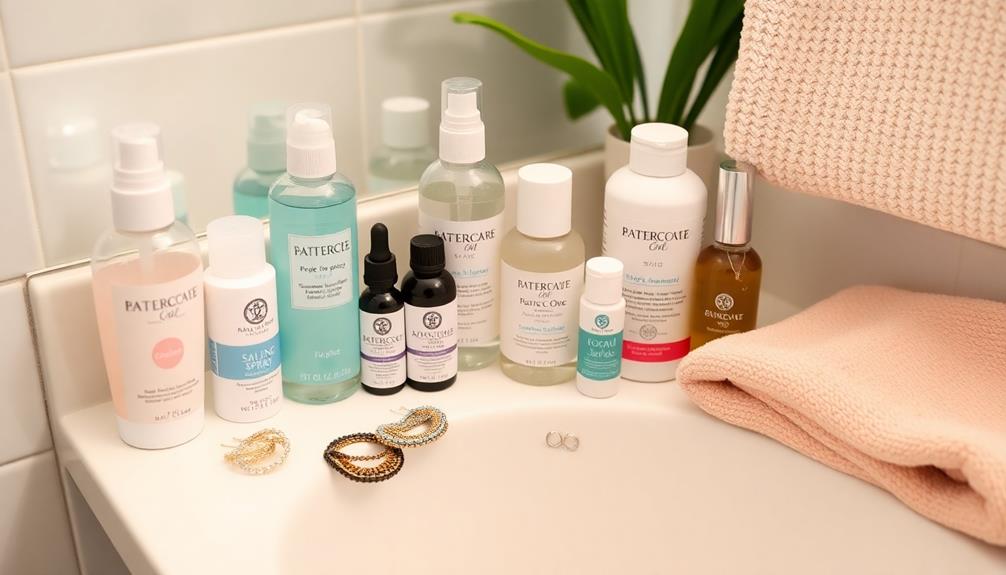
In order to create an effective aftercare routine for your piercings, it is essential to take into account the unique healing times and needs of each type. Different piercings require tailored cleaning frequencies and products. For instance, tongue piercings usually heal within 4 to 6 weeks, while navel piercings can take 6 months to a year.
Here's a quick reference table to help you customize your routine:
| Piercing Type | Initial Care | Cleaning Frequency |
|---|---|---|
| Tongue | Use sterile saline solution | Twice daily |
| Navel | Apply specialized spray | Once daily |
| Lobe | Clean with saline solution | Once daily |
| Helix | Use saline and avoid tight clothes | Once or twice daily |
| Cartilage | Clean with saline and avoid sleeping on it | Once or twice daily |
Always keep an eye out for signs of infection, like excessive swelling or pus, and adjust your aftercare routine accordingly. Remember that each piercing has specific precautions, and following a personalized routine will promote faster healing and a smoother recovery.
Frequently Asked Questions
Can You Have Multiple Piercings Healing at Once?
Yes, you can definitely have multiple piercings healing at once. Just remember to clean each one regularly, avoid irritants, and be mindful of your body's healing capacity to guarantee the best results.
How Do You Take Care of Multiple Ear Piercings?
Taking care of multiple ear piercings can feel overwhelming, but don't worry! Clean them twice daily with saline, avoid irritants, and monitor for healing signs. You've got this—your ears will thank you later!
How Many Piercings Is Too Many to Get at Once?
You shouldn't get more than 2-3 piercings at once. It helps guarantee each piercing heals properly and reduces the risk of irritation or infection. Space them out for better care and comfort during healing.
How Do You Sleep With Multiple Piercings?
When you've got multiple piercings, sleep on your back or use a travel pillow. Keep hair tied back, change bedding regularly, and avoid side sleeping to guarantee comfort and proper healing for your piercings.
Conclusion
In the journey of healing your piercings, think of aftercare as the gentle embrace that nurtures your body. By following a personalized routine and staying vigilant for any signs of trouble, you'll create an environment where your piercings can flourish. Remember, patience is key—like a flower blooming in spring, your piercings need time to heal. So, give them the love and attention they deserve, and you'll flaunt those beautiful adornments with confidence in no time!
Hi, my name is Danielle, and I’m an author for piercings-body.com. I have a passion for writing and love to share my knowledge on all things body piercing-related. I’m also a huge advocate for safe body modification practices and believe everyone should be able to make informed decisions about their bodies. When I’m not writing or blogging, I enjoy spending time with my family and friends, practicing yoga, and exploring new places.

